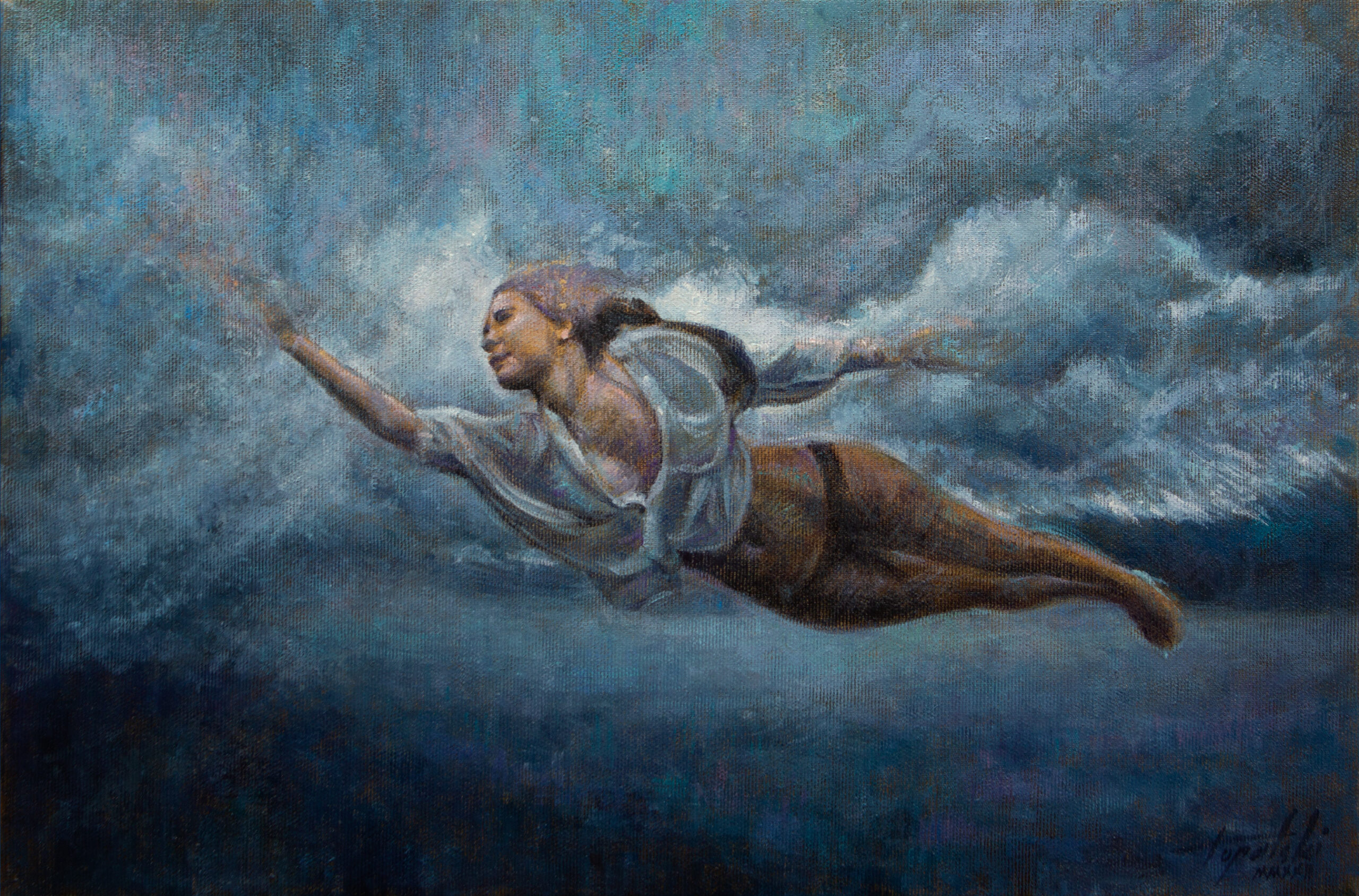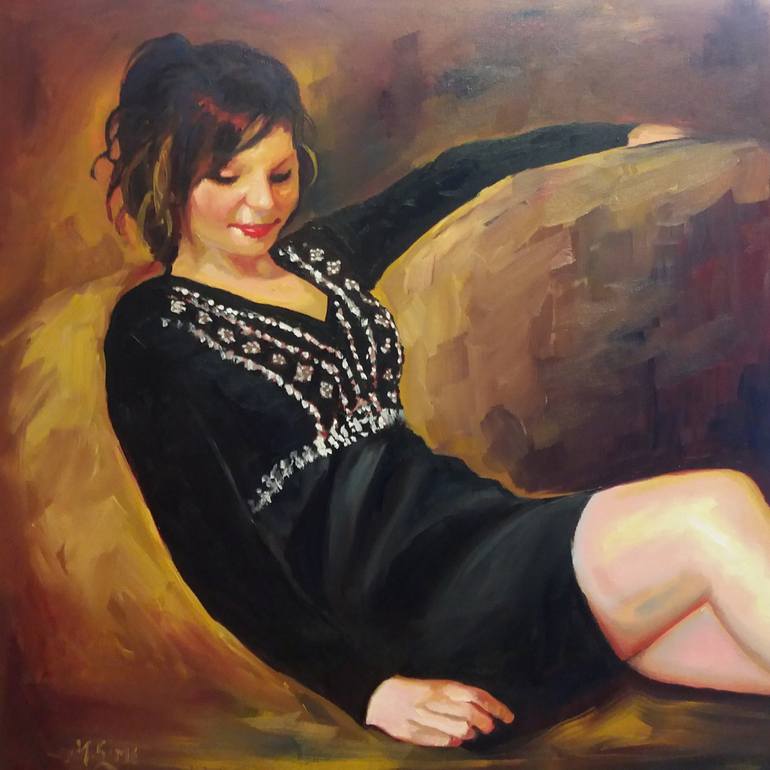The Function of Emotion and Expression in Figurative Oil Painting: An In-Depth Evaluation of Topic Issue and Make-up
The interaction of emotion and expression in figurative oil paint works as a vital lens whereby one can check out the intricate partnership between topic and structure. Artists harness different strategies, from color choice to brushstroke dynamics, to grow emotional vibration within their works. This nuanced orchestration not only shapes viewer assumption but also invites a much deeper inquiry right into exactly how these elements coalesce to mirror the complexities of human experience. As we explore this abundant terrain, one should consider exactly how specific instance studies brighten the wider ramifications of these artistic choices.
Recognizing Emotion in Art
Feeling in art acts as a powerful avenue for expression, allowing artists to share complicated sensations through their job. In figurative oil painting, this psychological deepness is typically portrayed with the representation of the human number, catching the subtleties of human experience. The selection of topic, shade scheme, and brushwork all add to the emotional resonance of an item.
Artists frequently attract upon individual experiences, social issues, or universal motifs to stimulate sensations in the visitor. A portrait may mirror susceptability, while a dynamic figure in activity can symbolize freedom or turmoil. These emotional threads connect the customer to the artwork, promoting a dialogue that goes beyond the visual medium.
Additionally, the interplay between light and shadow can amplify emotional intensity, guiding the viewer's gaze and drawing attention to particular elements within the composition. Making use of appearance in oil paint better includes layers of intricacy, inviting a responsive action that improves the emotional experience. On the whole, understanding emotion in art is important for valuing the subtleties that characterize figurative oil paint, as it changes mere representation into an extensive exploration of the human condition.
Trick Aspects of Make-up
In the world of figurative oil painting, the structure works as the underlying structure that arranges aesthetic components and boosts the emotional narrative. Vital parts of structure consist of equilibrium, comparison, centerpiece, and rhythm, each adding to the overall effect of the artwork.
Balance describes the distribution of aesthetic weight within the paint, which can be accomplished with unbalanced or symmetrical plans. A well-balanced make-up offers security, allowing the audience to engage with the piece harmoniously - figurative oil painting. Contrast, on the other hand, involves comparing various elements, such as light and dark or warm and awesome colors, to guide the audience's eye and stimulate emotional responses
The focal factor is essential, as it directs attention to the most significant component of the painting, often highlighting the emotional core of the narrative. By masterfully incorporating these crucial aspects, artists can craft mentally resonant and engaging figurative oil paints that astound and engage their audience.
Topic and Its Influence
Subject plays an essential function in metaphorical oil paint, as it not only acts as the structure for the story however likewise forms the visitor's interpretation and emotional engagement with the art work. The selection of subject-- be it a singular number, a group dynamic, or a thematic representation-- directly affects the emotional environment shared to the audience.

For circumstances, pictures usually stimulate personal links, exposing the complexities of human expression and personality, while scenes depicting communal activities can create a sense of belonging or fond memories. The historical and social context of the subject issue enriches the audience's understanding, prompting deeper representations on social norms, worths, and the human problem.
Different subject issues likewise generate differing degrees of engagement; a remarkable problem depicted through figures in tension may generate feelings of anxiety or compassion, while calm landscapes can conjure up tranquility and reflection. Inevitably, the influence of subject issue in metaphorical oil painting is profound, as it functions as my explanation a conduit for psychological vibration, assisting the viewer's action and interpretation, and cultivating a connection in between the viewer and the artwork. This interplay is vital for the effective interaction of the artist's intent.
Methods for Stimulating Sensations
The performance of figurative oil paint in communicating feelings is considerably influenced by the techniques used by the artist. One of one of the most crucial techniques is the use of shade concept, where the strategic selection of hues can stimulate details emotional responses. Cozy colors, such as oranges and reds, typically evoke feelings of passion or aggression, while cooler tones like blues and eco-friendlies have a tendency to stimulate calmness or unhappiness.
Another necessary method is the manipulation of light and darkness, called chiaroscuro. This method boosts the three-dimensionality of figures, creating dramatic contrasts that can escalate emotional depth. The placement of light can direct viewers' feelings, highlighting details aspects of the structure.
Brushwork also plays an important duty; loose, meaningful strokes can communicate power and spontaneity, whereas smoother techniques may recommend tranquility or accuracy. The plan of topics within the make-up can influence psychological influence. Close proximity can recommend intimacy, while range might show isolation.
Inevitably, the combination of these strategies enables musicians to craft stories that reverberate with the customer, transforming a mere visual experience right into an evocative emotional trip. - figurative oil painting

Instance Researches of Significant Functions
Taking a look at noteworthy works of metaphorical oil painting reveals exactly how various methods are employed to evoke powerful feelings. One exemplary instance is Edvard Munch's "The Scream," where the altered number and swirling history communicate existential dread. Munch's usage of color-- vibrant oranges and deep blues-- increases the emotional description influence, showcasing how combination options can shape visitor experience.
An additional significant job is Pablo Picasso's "Les Demoiselles d'Avignon." Right here, vibrant brushstrokes and fragmented types mirror a troubled psychological landscape, testing typical depictions of the women figure. Picasso's cutting-edge structure not just captures the customer's attention but likewise invites consideration on themes of identification and sexuality.
Additionally, Frida Kahlo's "The Two Fridas" offers a touching exploration of duality and self-identity. The different numbers, linked by a shared heart, exhibit Kahlo's psychological depth and individual narrative. figurative oil painting. Her careful attention to information and symbolic aspects offer to engage audiences on a visceral degree
These study emphasize the extensive link between feeling and composition in figurative oil paint, exposing how musicians harness strategy to connect complex sensations and stories that resonate across time and society.

Verdict
In final thought, the interplay of emotion and expression in metaphorical oil paint dramatically enhances the customer's experience and analysis of the art work. Through a mindful option of subject matter and compositional methods, artists communicate profound narratives that reverberate on both personal and global degrees. The application of shade chiaroscuro, concept, and brushwork more enhances emotional depth, transforming each canvas into a powerful reflection of the intricacies of the human experience.
In metaphorical oil paint, this psychological depth is often portrayed with the representation of the human number, recording the nuances of human experience.Additionally, the interaction between light and darkness can amplify emotional intensity, assisting the customer's gaze and attracting attention to particular aspects within the composition. The use of structure in oil painting additionally includes layers of complexity, welcoming a tactile response that enhances the emotional experience.The focal factor is important, as it directs attention to the most substantial part of the Check This Out painting, commonly highlighting the emotional core of the narrative. Ultimately, the impact of subject matter in figurative oil painting is extensive, as it offers as an avenue for psychological vibration, guiding the visitor's response and analysis, and cultivating a connection between the observer and the artwork.
Comments on “The Evolution of Art: A Comprehensive Guide to Figurative Oil Painting”